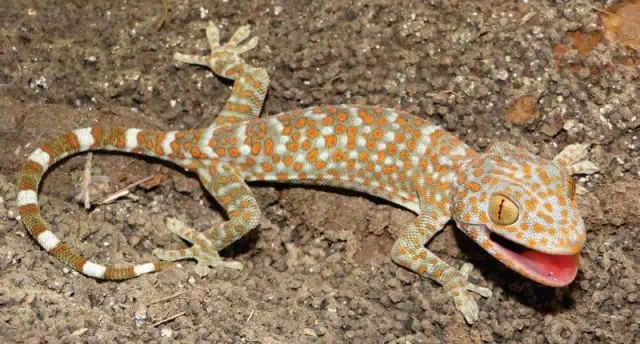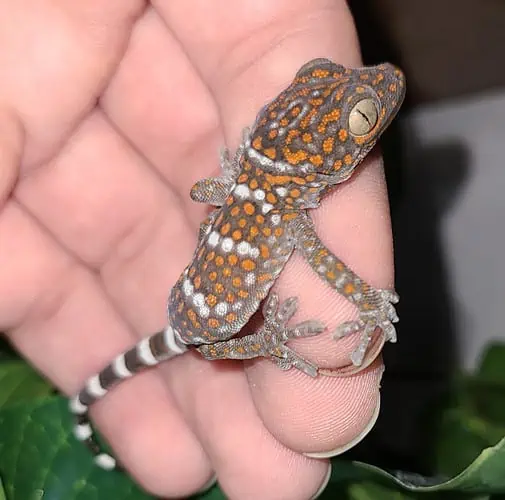Hello, Gecko enthusiasts! If you’re reading this, chances are, you’re invested in the welfare of your Tokay Geckos. We share your enthusiasm, and we’re here to help ensure you’re doing the best you can for these incredible creatures. Breeding is an exciting part of raising geckos, but it also carries a great responsibility.
Today, we’re diving deep into the world of ethical breeding practices, especially focusing on avoiding inbreeding and promoting genetic diversity within our beloved Tokay Geckos. So, buckle up, and let’s navigate this journey together to ensure a healthy, diverse future for our reptilian friends.
The Importance of Ethical Breeding
Why is ethical breeding so important, you might ask? Well, it’s all about maintaining the health, vitality, and survival of our precious Tokay Geckos. You see, ethical breeding isn’t just about the number of offspring produced. It’s about ensuring that the future generations of our Geckos are healthy and genetically diverse.
In nature, animals breed selectively, avoiding relatives and favoring the fittest individuals, which promotes genetic diversity and helps keep the species robust and adaptable. In captivity, we humans need to play a more active role in this process to counteract the restricted environment.
But what happens if we ignore this? What if we simply let our geckos breed without any regard for their genetic relationships? Well, this is where we start to see the dangers of inbreeding.
Understanding Inbreeding and its Consequences
Inbreeding, simply put, is the mating of closely related individuals. In the world of Tokay Geckos, this might happen when a breeder has a limited number of geckos to pair. However, inbreeding can lead to some serious problems.
The main issue is the doubling up of harmful genetic traits, which scientists call deleterious alleles. When geckos inbreed, their offspring are more likely to inherit two copies of these harmful traits. This can result in a range of problems, including health issues, reduced fertility, and even decreased survival rates.
Consider this analogy: Imagine you’re playing a card game where you’re dealt two cards from a deck. If both cards are the same suit, you lose. In a normal deck, your chances of drawing two cards of the same suit are lower. But if the deck is full of hearts, your chances of drawing two hearts are significantly higher. Inbreeding is like playing with a deck full of hearts – the odds of drawing a losing hand (inheriting two harmful traits) increase.
Inbreeding also decreases the overall genetic diversity of the population. This might not sound like a big deal, but it can actually make the population more vulnerable to diseases and less able to adapt to environmental changes.
All of this underscores the importance of avoiding inbreeding in our Tokay Geckos.
Genetic Diversity in Tokay Geckos
Genetic diversity is the natural variation in the DNA among individuals of a species. It’s a cornerstone of evolution and adaptation, and it’s incredibly vital for the health and survival of any species, including our Tokay Geckos.
Why so? Let’s break it down:
Firstly, genetic diversity increases a species’ adaptability. If a disease outbreak occurs, a genetically diverse population is more likely to contain individuals that are resistant to the disease. This means the population has a higher chance of surviving the disease outbreak.
Secondly, genetic diversity can lead to increased fertility and survival rates. Genetically diverse populations tend to produce offspring with higher genetic fitness. This means they are healthier, live longer, and produce more offspring themselves.
Lastly, genetic diversity makes our geckos interesting! Each individual’s unique combination of traits gives them their own special personality and appearance. It’s these differences that make the world of Tokay Geckos so fascinating to explore and appreciate.
Preserving and promoting this diversity is a significant part of ethical breeding. It ensures that the future generations of Tokay Geckos are as healthy, vibrant, and interesting as the ones we know and love today.
Practical Steps to Avoid Inbreeding and Promote Genetic Diversity

Now that we’ve established the importance of avoiding inbreeding and promoting genetic diversity, let’s get into the nitty-gritty of how you can actually put these principles into practice.
1. Keep Detailed Records: Start by keeping detailed records of your geckos’ genetic backgrounds. This includes information about their parents, siblings, offspring, and any other relatives. Having this information at your fingertips can help you make informed decisions when choosing breeding pairs.
2. Select Breeding Pairs Carefully: Choose breeding pairs that are not closely related to each other. The farther apart the individuals are in terms of genetic relation, the less likely it is that inbreeding will occur.
3. Diversify Your Breeding Stock: One way to promote genetic diversity is to bring in new geckos from other breeders. This can help diversify your breeding stock and reduce the risk of inbreeding.
4. Rotate Breeding Pairs: Don’t continually breed the same pairs of geckos. By rotating breeding pairs, you can help to promote genetic diversity and avoid the concentration of any harmful traits.
5. Work With Other Breeders: Collaboration is key. By working with other breeders, you can exchange valuable information and possibly even trade geckos to diversify your stock.
Remember, ethical breeding is a continuous learning process. There’s always more to learn, and even small changes can make a big difference in the health and vitality of our Tokay Geckos.
Case Study: Successful Implementation of Ethical Breeding
To make all these principles and ideas more concrete, let’s look at a real-life example. Meet Susan, a passionate Tokay Gecko breeder from Texas.
When Susan started her breeding venture, she started small with a pair of geckos. After a couple of generations, she noticed some of her geckos seemed weaker and were less vibrant than their parents. This worried Susan, and she began to research more about breeding practices and stumbled upon the concept of inbreeding and the importance of genetic diversity.
Susan took swift action. She started keeping detailed records of her geckos’ genetic backgrounds and began selecting breeding pairs more carefully. She also diversified her breeding stock by purchasing geckos from other trusted breeders. Susan was also proactive in connecting with other breeders, sharing information and sometimes trading geckos to help diversify each other’s stock.
Over time, Susan noticed the positive impact of these changes. Her geckos appeared healthier, and their offspring were more vibrant and energetic. She also noticed an increased genetic diversity in her geckos, which made her breeding program more interesting and rewarding.
Susan’s case shows that even small-scale breeders can successfully implement ethical breeding practices. It’s all about being informed, proactive, and committed to the wellbeing of your geckos.
Conclusion
We’ve journeyed through the world of ethical breeding, navigating the complexities of inbreeding, and the beautiful importance of genetic diversity. We’ve delved into practical ways to promote healthy breeding practices and even shared a success story to inspire. But, our journey doesn’t stop here.
Breeding our beloved Tokay Geckos is a never-ending journey of learning and discovery. Each day offers a new opportunity to improve and evolve our practices for the benefit of these extraordinary creatures. It’s about embracing the responsibility that comes with the joy and excitement of breeding.
Remember, every step you take towards ethical breeding helps to ensure a healthier, brighter, and more diverse future for our Tokay Geckos. So, let’s keep learning, keep growing, and continue to make the world of Tokay Geckos as vibrant and diverse as the geckos themselves!
FAQs
How can I tell if my geckos are related?
The best way to know if your geckos are related is by keeping detailed records of their lineage. This includes information about their parents, siblings, and offspring. In case you received your geckos from a breeder, they should be able to provide you with this information.
Can inbreeding be reversed in a population of geckos?
While the effects of inbreeding cannot be reversed in an individual, steps can be taken to reduce the likelihood of inbreeding in future generations. This includes diversifying your breeding stock, carefully selecting breeding pairs, and keeping detailed breeding records.
Is it ever okay to inbreed geckos?
While some breeders might use controlled inbreeding to stabilize certain traits, it’s generally not recommended due to the risks associated with inbreeding, such as health problems and decreased genetic diversity.
How can I promote genetic diversity in my geckos?
There are several ways to promote genetic diversity, including diversifying your breeding stock, carefully selecting breeding pairs, rotating your breeding pairs, and working with other breeders to exchange information and geckos.
How do I know if my geckos suffer from inbreeding?
Inbred geckos might show signs such as reduced vitality, increased health issues, and lower fertility rates. However, it can sometimes be challenging to spot these signs, which is why it’s important to avoid inbreeding in the first place.





